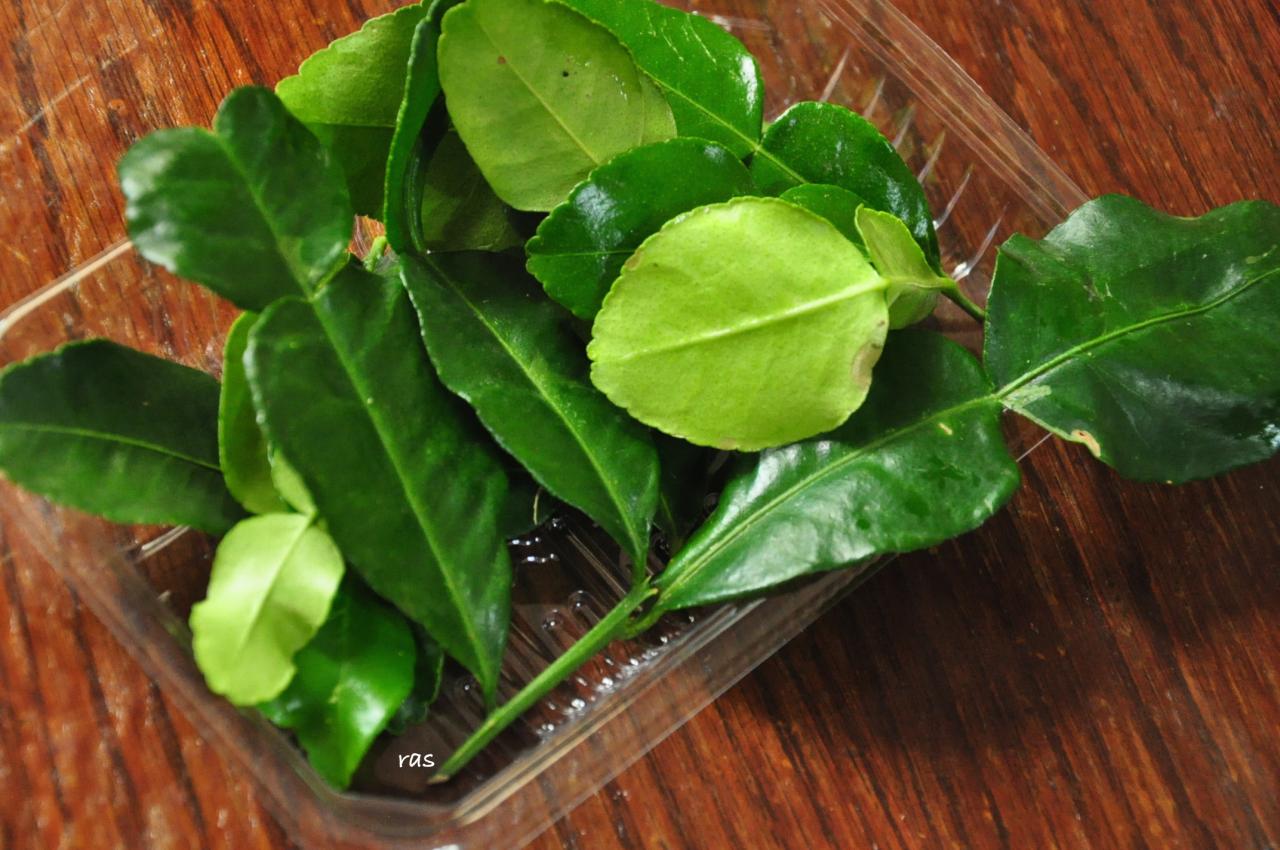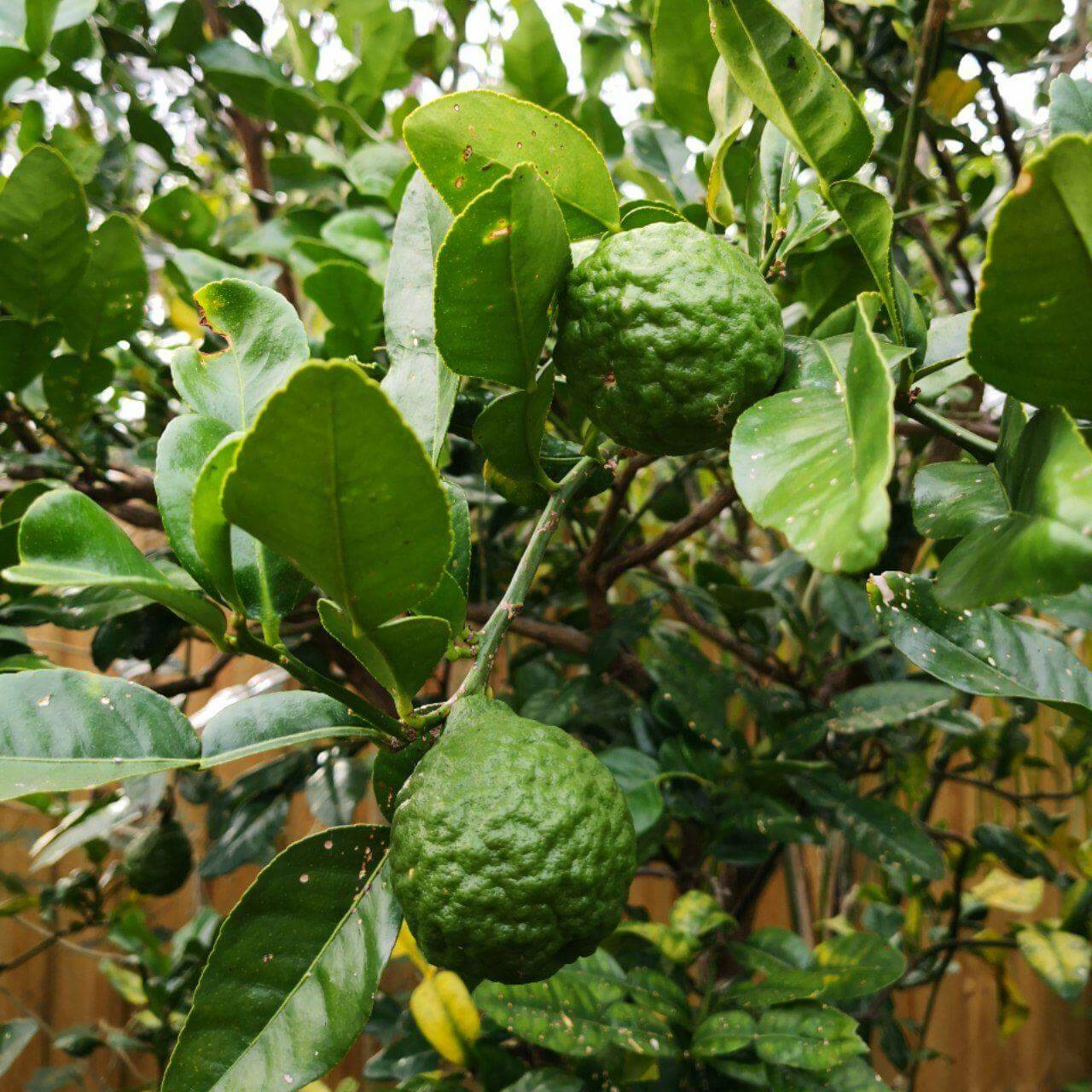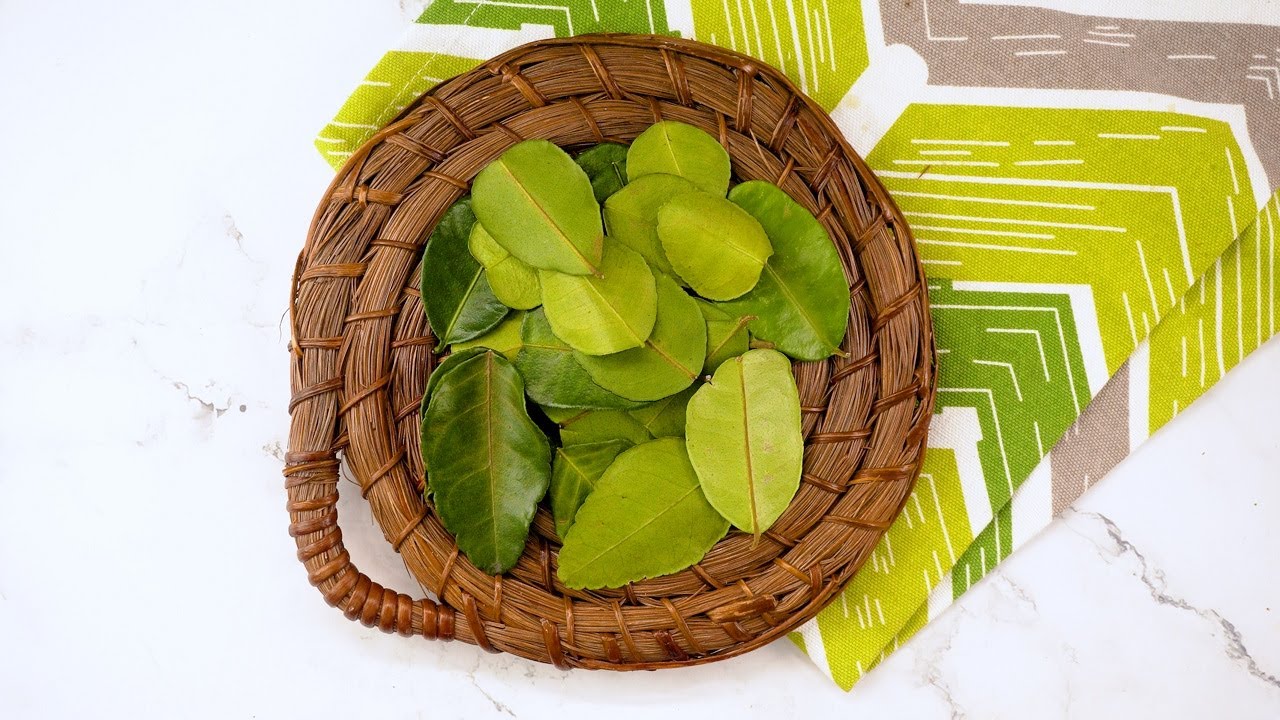The Ultimate Guide to Using Kaffir Lime Leaf in Your Cooking: Tips and Tricks embarks on a culinary journey, exploring the captivating world of kaffir lime leaves. This aromatic ingredient, with its unique citrusy and herbaceous notes, has long been a staple in Southeast Asian cuisine, adding a touch of complexity and freshness to dishes.
Whether you’re a seasoned chef or a curious home cook, this guide will empower you to confidently incorporate kaffir lime leaves into your culinary creations.
From understanding its origins and flavor profile to mastering various preparation techniques and discovering innovative recipes, this comprehensive resource will equip you with the knowledge and skills to elevate your cooking with the magic of kaffir lime leaves. We’ll delve into the history of this fascinating ingredient, explore its versatility across different cuisines, and uncover its potential health benefits.
Get ready to embark on a culinary adventure that will tantalize your taste buds and expand your culinary horizons.
Introduction to Kaffir Lime Leaf
Kaffir lime leaf, also known as makrut lime leaf, is a staple ingredient in Southeast Asian cuisine, particularly in Thai, Vietnamese, and Indonesian dishes. This unique citrus leaf offers a distinctive flavor profile that elevates the culinary experience.
Origins and History of Kaffir Lime Leaf
Kaffir lime trees are native to Southeast Asia and have been cultivated for centuries. The name “kaffir” is derived from the Arabic word “kafir,” meaning “unbeliever,” and was historically used to refer to non-Muslims. However, the term is now considered offensive and has been replaced with “makrut” in many contexts.
Just like a carefully cultivated herb garden thrives with proper care, so too does a culinary journey enriched by the nuanced flavors of kaffir lime leaves. From selecting the freshest leaves to understanding the best ways to use them in your dishes, our guide offers a wealth of knowledge.
And just as you might learn to propagate ivy for maximum growth and coverage, How to Propagate Ivy for Maximum Growth and Coverage , so too can you master the art of incorporating kaffir lime leaves into your cooking, unlocking a world of culinary possibilities.
Flavor Profile of Kaffir Lime Leaf
Kaffir lime leaf boasts a complex flavor profile that combines citrusy and herbaceous notes. The leaves have a distinct aroma that is both refreshing and pungent, reminiscent of lime zest and lemongrass. The flavor is slightly bitter and tangy, adding a unique depth to dishes.
Versatility of Kaffir Lime Leaf in Cuisine
Kaffir lime leaf is a versatile ingredient that can be used in various culinary applications. It is commonly used in curries, soups, stir-fries, and marinades. The leaves can be added whole, torn, or finely chopped, depending on the desired effect.
Examples of Dishes Featuring Kaffir Lime Leaf
- Thai Green Curry:This iconic dish features kaffir lime leaves, along with other aromatic ingredients like lemongrass, galangal, and chilies, to create a flavorful and fragrant curry paste.
- Vietnamese Pho:Kaffir lime leaves are often added to the broth of Vietnamese pho, lending a subtle citrusy aroma and flavor.
- Indonesian Soto Ayam:This chicken soup features kaffir lime leaves, along with turmeric, ginger, and other spices, for a rich and flavorful broth.
Culinary Uses of Kaffir Lime Leaf
Kaffir lime leaves are a staple ingredient in Southeast Asian cuisine, particularly in Thai and Vietnamese dishes. Their unique aroma and flavor profile, characterized by citrusy notes with a hint of earthiness, add depth and complexity to various culinary creations.
Common Dishes Featuring Kaffir Lime Leaf
Kaffir lime leaves are commonly used in a wide range of dishes, including:
- Soups:Tom Kha Gai (Thai Coconut Chicken Soup), Tom Yum (Spicy and Sour Soup), and Vietnamese Pho (Noodle Soup)
- Curries:Green Curry, Red Curry, Massaman Curry, and Yellow Curry
- Stir-fries:Pad Thai (Thai Noodle Dish), Pad See Ew (Thai Stir-fried Noodles), and Vietnamese Stir-fried Dishes
- Marinades:For chicken, fish, and seafood, adding a citrusy and aromatic touch
- Desserts:Thai Sticky Rice with Mango (Khao Niao Mamuang), where the leaves are used to infuse the coconut milk
Incorporating Kaffir Lime Leaf into Dishes
Kaffir lime leaves can be incorporated into dishes in various ways, depending on the desired outcome and the specific dish:
- Whole Leaves:Often used in soups, curries, and stews, adding a distinct aroma and flavor to the dish. The leaves are typically removed before serving.
- Torn or Chopped Leaves:Used in stir-fries, marinades, and sauces, where the leaves are finely chopped or torn to release their flavor more quickly.
- Infused Oil:Kaffir lime leaves can be infused in oil, which can then be used to flavor dishes. The leaves are typically heated in oil until fragrant, then removed.
- Paste:Kaffir lime leaves can be blended into a paste, which can be used to flavor curries, soups, and sauces.
Flavor Contribution and Cooking Techniques
| Culinary Application | Flavor Contribution | Cooking Technique ||—|—|—|| Soups | Citrusy, herbaceous, and slightly peppery | Simmered in the soup broth for a long time to infuse the flavor || Curries | Adds a fragrant and citrusy aroma, enhancing the richness of the curry | Added to the curry paste or simmered in the curry sauce || Stir-fries | Provides a bright and refreshing flavor | Added towards the end of cooking to preserve the aroma and flavor || Marinades | Adds a citrusy and aromatic touch to the marinade | Finely chopped or torn leaves are added to the marinade || Desserts | Infuses coconut milk with a citrusy and floral aroma | The leaves are simmered in coconut milk for a long time |
“The leaves can be used fresh or dried, but fresh leaves are preferred for their stronger flavor and aroma.”
Tips for Using Kaffir Lime Leaf

Unlocking the full potential of kaffir lime leaves in your cooking hinges on choosing the right leaves and mastering the art of preparation. Freshness and proper handling are key to ensuring a burst of citrusy aroma and flavor in your dishes.
Selecting Fresh Kaffir Lime Leaves
The quality of your kaffir lime leaves directly impacts the taste and aroma of your dish. Fresh, vibrant leaves are essential for achieving the best results. Here’s what to look for:
- Deep Green Color:Fresh kaffir lime leaves should have a deep, vibrant green color. Avoid leaves that are yellowing or browning, as this indicates they are past their prime.
- Firm Texture:The leaves should feel firm and slightly leathery to the touch. Avoid leaves that are limp or wilted, as they will have lost their flavor.
- Intense Aroma:Fresh kaffir lime leaves should have a strong, citrusy aroma. If the leaves lack a distinct fragrance, they may not be fresh.
Preparing Kaffir Lime Leaves for Cooking
The way you prepare kaffir lime leaves for cooking depends on the desired outcome. Here are some common methods:
- Bruising:This method releases the leaves’ essential oils, adding a potent citrusy flavor to your dishes. Gently bruise the leaves with the back of a knife or a mortar and pestle. This is a popular technique for soups, curries, and stews.
- Chopping:For a more subtle flavor, chop the leaves finely. This method is suitable for stir-fries, salads, and marinades.
- Infusing:Infusing kaffir lime leaves in hot liquids like water or oil is a great way to extract their aroma and flavor. This method is commonly used for making tea, sauces, and oils.
Storing Kaffir Lime Leaves
Proper storage is crucial to preserving the freshness and flavor of kaffir lime leaves. Here are some tips:
- Refrigerator:Store fresh kaffir lime leaves in a plastic bag or airtight container in the refrigerator. They can last for up to a week if stored properly.
- Freezing:For longer storage, you can freeze kaffir lime leaves. Wash and dry the leaves thoroughly before placing them in a freezer bag. Frozen leaves can last for up to 3 months.
Recipes Featuring Kaffir Lime Leaf

Kaffir lime leaf adds a unique citrusy aroma and flavor to a wide range of dishes. Its versatility makes it a staple ingredient in many cuisines, especially in Southeast Asian cooking. Explore these recipes to discover the diverse culinary applications of kaffir lime leaf.
Southeast Asian Cuisine
Southeast Asian cuisine heavily incorporates kaffir lime leaf in its dishes. These recipes showcase the leaf’s traditional uses and how it contributes to the distinct flavors of the region.
- Tom Kha Gai (Thai Coconut Soup with Chicken):This comforting soup features chicken, coconut milk, galangal, lemongrass, and kaffir lime leaves. The leaves impart a subtle citrusy aroma and a refreshing tang. The combination of ingredients creates a complex and flavorful broth.
- Green Curry (Thai):Green curry is a staple in Thai cuisine. It’s known for its vibrant green color, achieved by using green chilies, fresh herbs, and kaffir lime leaves. The leaves add a unique citrusy note and a hint of bitterness that balances the spice and richness of the curry.
- Rendang (Indonesian Beef Curry):Rendang is a rich and flavorful beef curry originating from Indonesia. It is slow-cooked for hours with coconut milk, spices, and kaffir lime leaves. The leaves contribute a subtle citrusy aroma and a touch of bitterness, complementing the rich flavors of the curry.
Unlocking the secrets of kaffir lime leaf can elevate your cooking to new heights, adding a unique depth of flavor to your dishes. From soups and curries to stir-fries and marinades, this aromatic ingredient adds a distinct citrusy zest that’s hard to replicate.
To truly understand the versatility of kaffir lime leaf, check out The Secret Ingredient: How to Use Kaffir Lime Leaf for Authentic Asian Flavors , a comprehensive guide that delves into the traditional uses of this essential ingredient. With the right techniques, you’ll be able to infuse your dishes with the authentic flavors of Southeast Asia, unlocking the true potential of kaffir lime leaf in your cooking.
Other Cuisines
Kaffir lime leaf is not limited to Southeast Asian cuisine. It is also used in other culinary traditions, adding a unique twist to dishes.
- Vietnamese Pho:While not always a traditional ingredient, kaffir lime leaf can be added to pho to enhance its flavor. It adds a citrusy aroma and a refreshing tang, complementing the savory broth and aromatic spices.
- Thai-Inspired Stir-Fries:Kaffir lime leaf can be added to stir-fries to add a refreshing citrusy aroma and a hint of bitterness. It pairs well with vegetables, tofu, and chicken.
- Fish Dishes:Kaffir lime leaf is a popular ingredient in fish dishes. Its citrusy aroma and flavor complement the delicate taste of fish. It is often used in steaming, grilling, or curries.
Health Benefits of Kaffir Lime Leaf

Kaffir lime leaf, a staple in Southeast Asian cuisine, is not only prized for its unique aroma and flavor but also for its potential health benefits. This versatile ingredient has been traditionally used for medicinal purposes and is increasingly recognized for its antioxidant, anti-inflammatory, and digestive properties.
Antioxidant Properties
Kaffir lime leaf is rich in antioxidants, compounds that protect cells from damage caused by free radicals. These free radicals contribute to aging and various chronic diseases. The antioxidants in kaffir lime leaf, including flavonoids and phenolic compounds, help neutralize these harmful free radicals, promoting overall health and well-being.
Anti-Inflammatory Properties
Inflammation is a natural response to injury or infection. However, chronic inflammation can contribute to a range of health problems. Kaffir lime leaf contains compounds that have been shown to possess anti-inflammatory properties. These compounds help reduce inflammation in the body, potentially reducing the risk of chronic diseases.
Digestive Health
Kaffir lime leaf has traditionally been used to aid digestion. Its essential oils, particularly citral, can stimulate the production of digestive juices, helping break down food and improve digestion. This can help alleviate symptoms like bloating, gas, and indigestion.
Immunity Boosting
Kaffir lime leaf contains vitamin C, an essential nutrient that plays a crucial role in supporting the immune system. Vitamin C helps produce white blood cells, which are crucial for fighting off infections. Including kaffir lime leaf in your diet can contribute to a robust immune system, helping your body defend against illness.
Nutritional Content, The Ultimate Guide to Using Kaffir Lime Leaf in Your Cooking: Tips and Tricks
Kaffir lime leaf is a good source of vitamin C, dietary fiber, and essential minerals like potassium and magnesium. These nutrients contribute to various bodily functions, including energy production, nerve function, and muscle contraction.
Conclusion
This comprehensive guide has explored the multifaceted world of kaffir lime leaf, highlighting its unique flavor profile, diverse culinary applications, and impressive health benefits. From understanding its distinct aroma and taste to mastering the art of using it in various dishes, you now possess the knowledge and confidence to elevate your culinary creations with this versatile ingredient.
Remember, the key to unlocking the full potential of kaffir lime leaf lies in experimentation. Embrace the opportunity to explore different recipes, techniques, and flavor combinations. Don’t be afraid to get creative and let your taste buds guide you.
With each culinary adventure, you’ll deepen your appreciation for this aromatic treasure and discover new ways to incorporate it into your favorite dishes.
Resources for Further Exploration
The world of kaffir lime leaf is vast and brimming with possibilities. To continue your journey of culinary discovery, consider exploring these valuable resources:
- Online Culinary Websites and Blogs:Websites like Epicurious, Food & Wine, and The Spruce Eats offer a wealth of recipes and articles featuring kaffir lime leaf, providing inspiration and practical guidance.
- Cookbooks:Dedicated cookbooks focusing on Southeast Asian cuisine or featuring kaffir lime leaf as a key ingredient can offer in-depth knowledge and innovative recipes.
- Southeast Asian Grocery Stores:These stores often carry a wider selection of fresh kaffir lime leaves and other specialty ingredients, allowing you to explore the authentic flavors of this region.
Final Review
As you delve deeper into the world of kaffir lime leaves, you’ll discover a wealth of culinary possibilities. From adding a burst of freshness to soups and curries to infusing desserts with a subtle citrusy aroma, this ingredient offers a unique flavor dimension that will transform your cooking.
Remember, the key to mastering kaffir lime leaves lies in understanding its nuances, experimenting with different preparations, and embracing the culinary creativity it inspires. So, embark on your own culinary journey with this versatile ingredient and unlock a world of flavorful possibilities.
FAQs: The Ultimate Guide To Using Kaffir Lime Leaf In Your Cooking: Tips And Tricks
Where can I find kaffir lime leaves?
Kaffir lime leaves are commonly found in Asian grocery stores, specialty markets, and online retailers. They are often sold fresh, frozen, or dried.
How long do kaffir lime leaves last?
Fresh kaffir lime leaves can last for several days in the refrigerator when stored in an airtight container. They can also be frozen for longer storage.
What are some other uses for kaffir lime leaves besides cooking?
Kaffir lime leaves can be used in herbal teas, infused oils, and even as a natural insect repellent.
